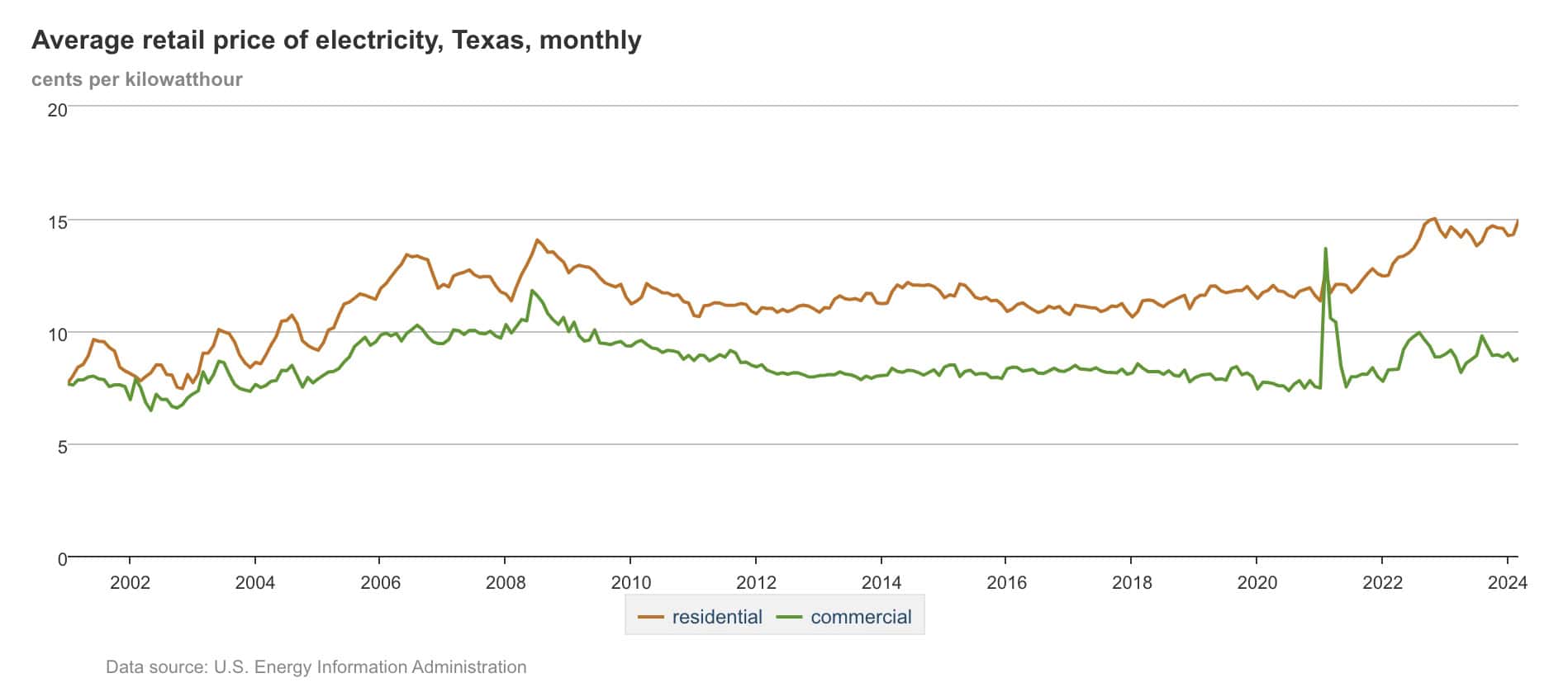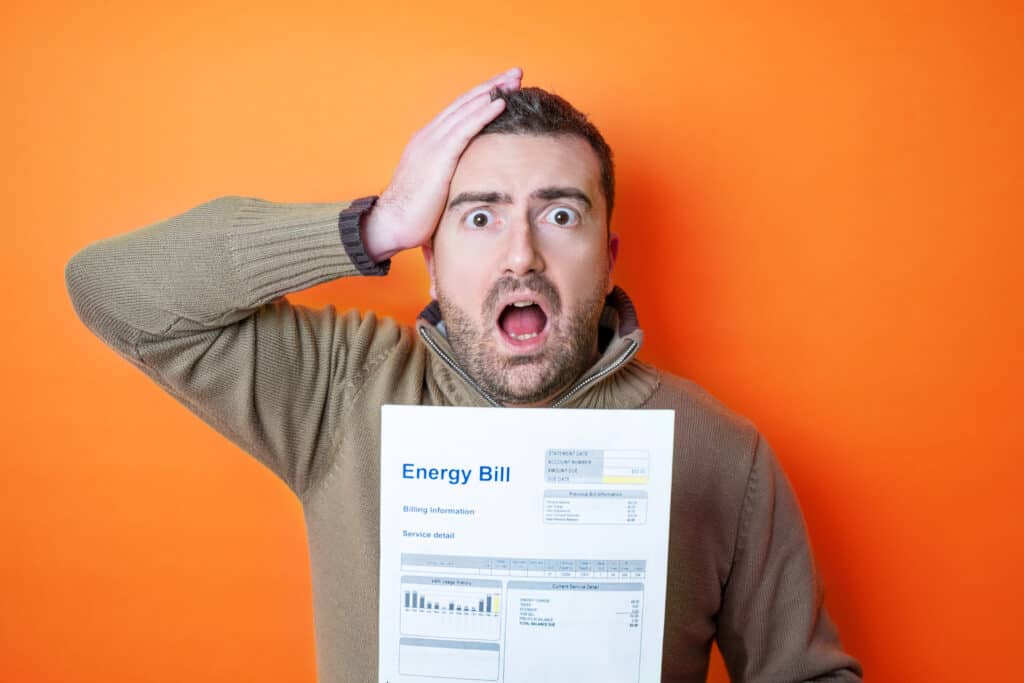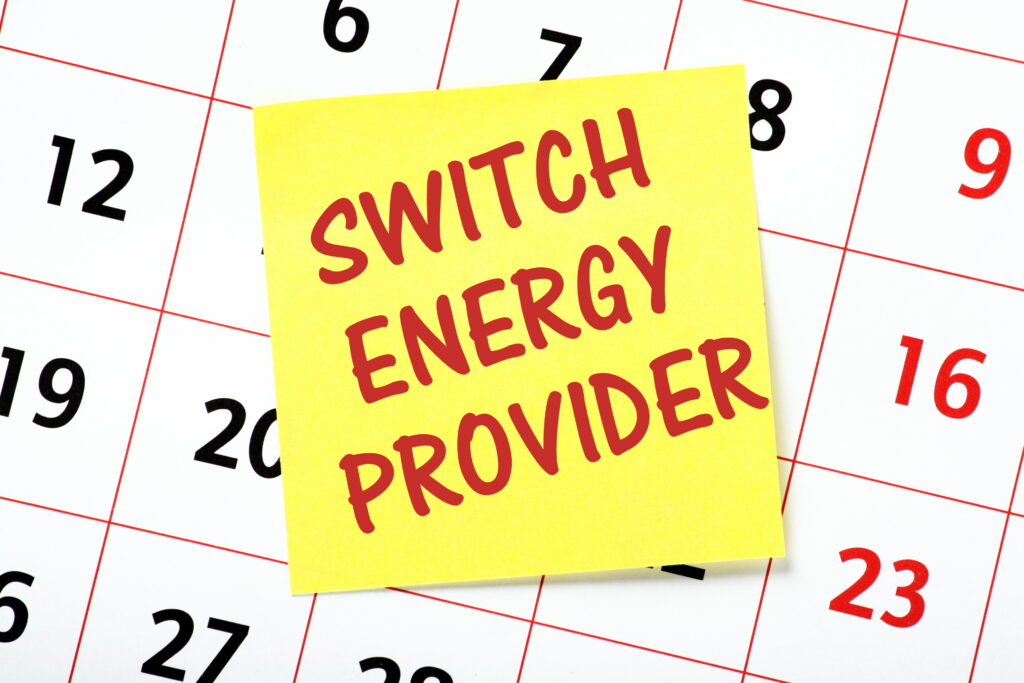Any product or company names, marks, or logos shown on this page are the property of their respective owners. ComparePower is an unaffiliated, independent marketplace. Get unbiased, accurate information backed by our commitment to editorial integrity.
Compare Texas Electricity Rates and Plans
Texas residents are paying an average of 15.84¢ per kilowatt-hour (kWh) for electricity this December, 12.3% below the national residential rate of 18.07¢/kWh. While that’s good news, many Texans are still overpaying due to tricky ads, teaser rates, and confusing contract terms from electricity providers.
Compare Power is Texas’ top-rated electricity marketplace, with over 75,000 five-star reviews. We’re independent, unaffiliated with any provider, and we compare over 250 real-time plans to show you what each one actually costs based on your usage—not the theoretical benchmarks providers advertise.
Here’s what you’ll find on this page: current rates for every major Texas city, which plan types work (and which are traps), how to compare based on your real annual usage instead of marketing gimmicks, and when to lock in rates to avoid next summer’s spikes.
Key Takeaways
- Texas residential electricity rates are 15.84¢/kWh, 12.3% below the national average.
- Commercial rates in Texas are even lower at 9.10¢/kWh, 35.3% below the U.S. average.
- Rates have increased 2.5% from the previous month, driven by higher natural gas and fuel costs.
- Electricity usage peaks in the summer, with the average Texas household using 1,537 kWh in August and paying $237 per month.
- You have the “power to choose” your electricity provider in deregulated areas, but understanding plan types and comparing offers is crucial to avoid overpaying.
Current Rates Overview
According to the latest data from the U.S. Energy Information Administration (EIA), the average residential electricity rate in Texas as of September 2025 was 15.84¢/kWh. This represents a 2.5% increase from the previous month’s rate of 15.45¢/kWh, driven primarily by higher natural gas and fuel costs.
In comparison, the national average residential electricity rate was 18.07¢/kWh, meaning Texans pay 12.3% less than the rest of the country on average. The story is even better for Texas businesses, which are enjoying commercial electricity rates of just 9.10¢/kWh—35.3% below the U.S. commercial average of 14.06¢/kWh.
This electricity price gap between Texas and the rest of the nation has persisted for years, thanks to the state’s unique deregulated electricity market, abundant natural gas resources, and growing renewable energy infrastructure. However, it’s important to note that rates can vary significantly by location, usage level, and the specific electricity plan you choose.
Electricity Rates by City
Here are the lowest electric rates available right now in major Texas cities (prices for 500, 1,000, and 2,000 kWh).
Understanding Your Electric Bill
Before we dive into the different electricity plan types and how to compare them, let’s first break down the key components of a typical Texas electric bill:
Delivery Charges (TDU): These are the fees charged by your local Transmission and Distribution Utility (TDU) to maintain the power lines and infrastructure that deliver electricity to your home. TDU charges make up around 30-40% of your total bill.
Energy Charge: The rate you pay per kilowatt-hour (kWh) of electricity used. It’s the part of your bill that fluctuates based on your actual usage.
Taxes and Fees: State and local taxes, as well as any additional regulatory fees, can add 5-10% to your total electric bill.
It’s important to understand these billing elements so you can accurately compare the true cost of different electricity plans, not just the advertised energy rate. We’ll dive deeper into that process in a bit.
Plan Rate Types Available in Texas
Fixed-Rate Plans — Lock in your price per kWh for six to thirty-six months. Suitable for predictable bills and protection from seasonal spikes. Fall is typically when these plans offer their most competitive pricing.
Variable-Rate Plans — Variable plans have rates that can change month-to-month based on market conditions. They offer more flexibility but also more uncertainty.
Time-of-Use Plans — Pay less during off-peak hours, such as nights and weekends. These made more sense during the summer when you could shift heavy AC loads to off-peak hours. In fall’s moderate weather, the savings often don’t justify the higher peak rates.
Prepaid Electricity — Pay-as-you-go and track usage with alerts—some prepaid plans offer no deposit or credit check. It can serve as a short-term bridge while you wait to secure a longer contract.
Flat-Rate Plans — Pay one flat fee regardless of your usage. Consistent monthly bills, but you typically pay a premium for this predictability.
Business Electricity Plans — Custom quotes for companies with significant power needs. Get a tailored rate that fits your operation.
How to Compare Electricity Plans
Comparing electricity plans in Texas goes beyond just looking at the advertised energy rate. You need to dig into the Electricity Facts Label (EFL) and do some simple math to determine the true cost.
Key things to look for in the EFL include:
- Energy charge per kWh
- Minimum usage fees
- Disconnect/reconnect fees
- Early termination fees
To calculate the total monthly cost, use this formula:
(Energy Charge per kWh x Monthly Usage) + Fixed Monthly Fees = Estimated Electric Bill
This will give you the bottom-line price you’ll pay, allowing you to compare offers accurately. Beware of providers that bury hidden fees or use confusing “teaser” rates.
How to Choose Your Best Energy Plan
The lowest rate isn’t always the best choice. Here’s why:
Advertised rates are benchmarks, not guarantees. Those eye-catching low advertised rates you see are calculated at exactly 500, 1,000, or 2,000 kWh. Use 1,001 kWh or 999 kWh, and your per-kWh cost can shift dramatically.
Usage-based credits bite both ways. Some plans offer a bill credit if you stay within a specific range. Fall consumption typically drops to 800-900 kWh. If your plan requires 1,000 kWh to trigger a credit, you’ll miss it and pay the premium base rates for the entire season.
Seasonal swings affect your annual cost. You might use 800 kWh in November and 1,500 kWh next July. Select a plan that accommodates both extremes, not just today’s moderate usage.
Contract length controls when you shop next. This matters more than people realize. A 12-month plan signed in October puts your next renewal in October 2026—another good shopping window. But a 9-month plan expires in July when rates typically spike. Use contract length strategically.
Match your plan to your actual consumption pattern. Our Live Link tool pulls your actual usage history straight from the utility, so you can see how each plan would have priced your actual consumption across all twelve months.
With Live Link™, you get data-driven recommendations by pulling your real usage numbers directly from your utility. Skip the guesswork and compare plans based on your complete annual pattern.
Ready to see your options? Explore current offers tailored to your usage with Live Link →
Seasonal Rate Trends
Electricity usage and prices in Texas tend to follow predictable seasonal patterns. Demand and rates are typically lowest in the spring (March-May) when temperatures are mild. They then rise steadily through the hot summer months, peaking in August when the average Texas household uses 1,537 kWh and pays $237 per month.
Rates begin to decline again in the fall (September-November) as cooling needs subside, before ticking up once more during the winter heating season (December-February). However, severe cold snaps can also cause unexpected spikes in demand and prices during the winter.
Knowing these seasonal trends can help you time your electricity shopping to get the best deals. The sweet spots are usually in spring and fall, when you can lock in lower fixed rates before seasonal price swings.
Best Texas Electricity Rates for December 2025
Looking for competitive electricity rates in Texas right now? Based on 1,000 kWh usage in the ONCOR service area, current plan prices range from 10¢ to 16¢ per kWh, depending on the provider and plan type.
| Provider & Plan | Term | Rate per kWh |
|---|---|---|
| Frontier Utilities – Saver Plus 12 | 12 months | 10.1¢ |
| 4Change Energy – Maxx Saver Select 24 | 24 months | 10.6¢ |
| Just Energy – Power Plus 24 | 24 months | 12.5¢ |
| Reliant – Power Savings 12 | 12 months | 15.5¢ |
| Constellation – 12Mo Usage Bill Credit | 12 months | 16.3¢ |
Texas Deregulation Explained
Texas has operated under a deregulated electricity market since 2002, which means residents in most parts of the state have the “power to choose” their electricity provider and plan. This is different from regions with traditional monopoly utilities, where customers have no options.
In the Texas deregulated model, the physical transmission and distribution of electricity is still handled by local utility companies (TDUs). But the generation and retail sale of power is open to competition among Retail Electric Providers (REPs). REPs are private companies that offer a variety of electricity plans and rates to consumers.
The Electric Reliability Council of Texas (ERCOT) manages the state’s independent power grid and ensures a reliable flow of electricity. ERCOT also oversees the competitive retail market, setting guidelines and protocols for REPs.
The areas of Texas that remain under traditional regulated utility service are the Texas Panhandle, the El Paso region, and parts of East Texas. Residents in those areas do not have the power to choose their electricity provider.
Winter 2025 Energy Tips for Texans
Use Live Link™ to base your comparisons on real usage, not estimates. Your actual consumption pattern across twelve months shows you what you’ll really pay—not what providers advertise at convenient benchmarks.
Avoid late-summer renewals. Think about contract timing. Winter months are historically decent shopping months. A 12-month plan signed now positions your next renewal in Winter 2026. A 6-month plan puts you back in the market in June (typically not a good time to shop rates in Texas). A 9-month plan expires in September or October when rates are often at their lowest.
Don’t get stuck on a variable plan. Simple fixed rates usually win. Bill credit plans, free nights, and seasonal discounts often end up costing more overall when you calculate the total annual cost. December’s competitive market means you can find solid, straightforward rates without gimmicks.
It’s not your fault—the system is designed to be confusing. But we’ve already done the homework so that you can get back to your day, confident you aren’t overpaying for electricity in Texas.
Texas Electricity Rates Chart

This chart tracks how residential and commercial rates in Texas fluctuate with the seasons. Notice the sharp jumps in summer when air conditioners across the state stress the grid. Business rates stay steadier, while residential customers see the most volatility.
Fall (September-November) typically shows moderate pricing as consumption drops and wholesale costs stabilize. Understanding these patterns helps you choose when to lock in a rate and when to keep shopping.
Fixed‑rate plans can shield you from summer spikes, while variable holdover rates may leave you exposed when demand peaks.
Texas Electricity Rates FAQs
Confused about Texas electricity rates? Here’s what you need to know.
What is the average electric bill in Texas?
The average monthly electric bill for Texas households is $207, based on an average usage of 1,308 kWh and a residential rate of 15.84¢/kWh.
What are the average summer electricity bills in Texas?
Bills vary widely based on home size, efficiency, and habits. A typical home uses about 1,000 kWh in mild months but can hit 1,400-2,500 kWh in summer. Fall sees that drop to 800-900 kWh as AC usage plummets. At current competitive rates (11-13¢/kWh), you’re looking at roughly $90-120 monthly through November.
Should I switch plans before summer arrives?
If you’re on a variable rate or your contract expires before June, yes—lock in a fixed rate in the fall or spring, when pricing is typically more competitive. If your fixed rate expires in May, shop in April (historically another good month). Don’t let it roll to the variable right before summer.
Who has the cheapest electricity rates in Texas?
Gexa Energy, Frontier Utilities, and Rhythm Energy often show competitive rates. But “cheapest” depends on your specific usage pattern and location. A plan that’s cheap at 1,000 kWh might be expensive at 850 kWh or 1,200 kWh. Always compare based on your actual consumption.
What is a good electricity rate in Texas?
In fall 2025, competitive fixed-rate plans are available for 11-13¢/kWh over 12-month terms. What’s “good” depends on your usage level and where you live, but that range represents solid pricing in current market conditions.
How do I compare electric rates in Texas?
Start by looking at past bills to see how much you use each month—all twelve months, not just right now. Then compare plans based on your real consumption pattern and read the fine print on fees. The Electricity Facts Label (EFL) shows actual per-kWh pricing at different usage levels, reveals base charges and hidden fees, and explains conditions for any credits or discounts.
How do I find the best electricity rates in Texas?
Know your annual usage pattern, review both fixed and variable options, and watch for fees buried in the EFL. The best rate balances cost and flexibility for your specific needs. Use comparison tools that let you input your actual usage, not just the advertised benchmarks.
Who has the best electric rates in Texas?
It varies by provider, location, and your usage pattern. TXU, Reliant, and Green Mountain Energy often have competitive rates. Read reviews, compare plans based on your actual usage level, and review the EFL before committing.
Why are Texas electric bills so high?
If your bills are high right now in the fall, you’re likely on an expensive variable-rate plan or a bill-credit plan where you’re missing the threshold. Summer bills are high because of AC loads—unavoidable in Texas heat. High bills in moderate weather usually mean you’re on the wrong plan.
Why is Texas electricity so expensive?
Summer demand spikes, natural gas price fluctuations, and the deregulated market all play roles. Texas also has an isolated grid that can’t borrow power from neighboring states during shortages. Picking the right plan and shopping at the right time helps you manage costs.
Will Texas electricity rates go down in 2025?
Rates typically moderate from October through November as demand stays low. Looking ahead, wholesale markets suggest that power for 2026-2027 is currently trading at a lower price than for 2025, which could make longer-term contracts signed now more valuable. But market conditions change—nobody can guarantee future rates.
What is the current price of electricity in Texas?
Rates currently range from 9¢ to 23¢ per kWh depending on plan type, provider, and location. Most homes on fixed contracts pay 12-16¢/kWh. Variable rates fluctuate more widely and can spike higher during extreme weather conditions.
What is the cheapest electricity provider in Texas?
There is no single “cheapest” electricity provider in Texas, as rates can vary significantly by location, usage, plan type, and provider offerings. The best way to find the most affordable electricity plan for your home is to compare quotes from multiple providers using a free marketplace like Compare Power.
Do I have to switch electricity providers in Texas?
No, you are not required to switch electricity providers in Texas. However, by taking advantage of the state’s deregulated market, you have the power to choose from a variety of plans and providers to find the best fit for your home or business. Customers in regulated utility areas do not have this choice.
How can I lower my electricity bill in Texas?
Some of the best ways to lower your electricity bill in Texas include:
– Comparing electricity plans and providers regularly
– Selecting the right plan type (fixed, variable, etc.) for your needs
– Reducing your electricity usage through energy-efficient upgrades
– Taking advantage of rewards programs and bill credits from providers
– Timing your electricity shopping to capitalize on seasonal rate patterns
Is there a cap on electricity rates in Texas?
No, there is no legal cap or price ceiling on electricity rates in Texas’ deregulated market. Rates are determined by market competition among Retail Electric Providers. However, the state’s Public Utility Commission does monitor the market and can intervene if it determines rates have become unreasonably high.
How does the Texas electricity grid work?
Texas has its own independent electric grid, known as ERCOT (Electric Reliability Council of Texas), which is not interconnected with the rest of the country. ERCOT is responsible for managing the flow of electric power to more than 26 million Texas customers and ensuring the reliability of the state’s electric system.
Within the ERCOT grid, electricity is generated by a variety of sources, including natural gas, coal, nuclear power, wind, and solar power. This power is then transmitted across high-voltage power lines and distributed to homes and businesses by local utility companies known as Transmission and Distribution Utilities (TDUs).
What percentage of Texas’ electricity comes from renewable sources?
As of late 2025, renewable energy sources (wind and solar) accounted for 28.1% of total electricity generation on the ERCOT grid. This represents a significant increase from previous years as Texas continues to expand its investments in wind and solar power. The state’s current fuel mix is: Natural Gas (48.1%), Wind (20.7%), Coal (13.0%), Solar (7.5%), Nuclear (10.6%), Battery Storage (-0.3%), and Other (0.1%).
How does Texas rank for electricity prices compared to other states?
Texas ranks #42 out of 48 continental states for its electricity prices, making it one of the cheaper states for residential electricity.
The states with the absolute lowest electricity rates are:
1. North Dakota (7.93¢/kWh)
2. Louisiana (8.80¢/kWh)
3. Nebraska (9.07¢/kWh)
4. Oklahoma (9.09¢/kWh)
5. Wyoming (9.14¢/kWh)
At the other end of the spectrum, the states with the highest electricity rates are:
1. Hawaii (38.00¢/kWh)
2. California (27.04¢/kWh)
3. Connecticut (24.37¢/kWh)
4. Rhode Island (24.15¢/kWh)
5. Massachusetts (23.94¢/kWh)
So while Texas electricity may not be the absolute cheapest, it remains well below the national average and significantly less expensive than in many other states.
Bottom Line
Bottom Line
Texas electricity rates may have ticked up a bit from the previous month, but they are still 12.3% below the national residential average and 35.3% lower for commercial customers. And with the power to choose your electricity provider, you have the opportunity to find even greater savings.
We’ve done the homework, so you don’t have to. Use a free marketplace like ComparePower to browse and compare the latest Texas electricity plans easily. That way, you can go back to your day, confident you aren’t overpaying for power.
*Rate data from U.S. Energy Information Administration (EIA), September 2025. EIA publishes with a 2-3 month lag.
Our Texas-based energy experts are here to help:
Live Chat (bottom right, Mon-Fri: 8:30 AM – 6:30 PM)
Call 855-441-3030 (Mon-Fri: 8:30 AM – 6:30 PM Sat: 9 AM – 4:30 PM)
Email [email protected]
Why Texans Trust Compare Power
With more than 81,590 five‑star reviews, Compare Power is Texas’ top electricity marketplace. We’re independent, transparent, and built to help you find value—not gimmicks. Enroll instantly online and start saving on your next bill.
Stay Informed with Our Latest Articles
We regularly publish tips to help you understand your options, make wise choices, and avoid overpaying for electricity. Check out our latest posts to stay ahead of the curve.









